Iowa Wine: On The Farm and Now In The City
Like many Midwestern states, Iowa has recently experienced a dramatic increase in the number of wineries from 53 in 2006 to 76 today. Not only has the number of wineries increased, but the types of wineries have become more diverse. Iowa has also become a leader in making wine from University of Minnesota cold climate grapes. In this article, we look at three wineries that represent the different faces of Iowa wine.
Tabor Home Winery
Tabor Home Vineyards and Winery fits the textbook definition of a farm winery. Winery Owner Dr. Paul Tabor lives in the same farmhouse that his family has lived in since the 1860’s. His house looks out on one of Iowa’s first post Prohibition vineyards which were planted in 1989. The view across Tabor’s vineyard and the rolling countryside is one of agricultural grandeur. Grant Wood’s paintings, including American Gothic, were inspired by this remote, unglaciated section of Northeast Iowa.
But Tabor, a PhD in microbiology, is anything but set in his ways. He continues to be active in hybrid grape research at his winery. This year, he will be harvesting 13 promising new vines from Cornell and the University of Minnesota as part of the Northern Grapes Project. Tabor will make these new cold climate grapes into wines that may someday rival LaCrosse, one of Tabor’s favorite cold climate varietals.
The allure of the rolling vineyards and fields that surround Tabor Home are not lost on Tabor. “The first question we normally get from customers is ‘which wines are made from the grapes out there?'” Tabor says, pointing out the tasting room window to the rows of grapes below.
Earlier in the Spring, the situation at Tabor Home was not so tranquil. During late April, after the buds had broken and shoots had formed on his vines, Tabor confronted a night of 25F temperatures. “We had saved the LaCrosse for the last rough pruning a couple of days before the cold hit so the vines were still bleeding pretty good. The morning of the big freeze, there were two-inch icicles hanging from where the vines had been cut. When I saw the icicles in the light of dawn, I thought to myself ‘this is not good.’ But as it turned out , the water the vines were bleeding was warmed by the earth to 40F, so it was a geothermal blessing. Because the vines were pumping warm water, we had no bud damage and now the crop looks good.”
Jasper Winery
Until 2007, Jasper Winery was located in Newton, Iowa, a town 35 miles west of Des Moines that was once the home of a two million square foot Maytag factory. After Maytag left Newton in late 2007, many businesses were forced to close or leave town. For Jasper Winery, the decision was made to switch from a farm winery to an urban winery. Not only did Jasper decide to relocate, they also decided to reposition the winery for an entirely new market – urban professionals.
“We are definitely not a farm winery” said tasting room and events manager Katie Bradshaw. “We get a lot of 20 somethings here, and we have to sell them on wine.” To meet demand, University of California Davis trained winemaker Mason Groben crafts wines for an urban clientele that are dry compared to most Iowa wines.
Jasper still maintains a 10 acre vineyard in Newton that grows cold climate grapes. But most of the winery’s customers are now from downtown Des Moines, which like many Midwestern cities, has seen an influx of young professionals who prefer city living. Bradshaw says that the Millennials who frequent Jasper are open to exploration, preferring to evaluate wines based on taste rather than varietal name recognition.
See related story: Growing with Downtown Indy at Easely Winery
Winemaker Groben and his sister Carly are both recognized names in the Des Moines culinary scene. While only in their mid-30’s, both have received national recognition. Jasper Winery’s 2007 Seyval Blanc received a “very good” rating from Wine Enthusiast. Carly’s upscale Proof restaurant in Des Moines won a James Beard Award in 2006.
Cedar Ridge Winery
Less than an hour’s drive south of Tabor Home Winery is Cedar Ridge Winery. Cedar Ridge is surrounded by ten acres of vineyards, but the winery has an intentionally more urbane feel. “The reason we are successful is that we’re not just a place for wine,” said general manager Jamie Siefken. “Cedar Ridge is a destination for food, libations, music and events,” he said. “Most of our customers are from Cedar Rapids and Iowa City (Cedar Ridge is between these two cities) so we give them more than one reason to visit.”

Jamie Siefken, general manager, Cedar Ridge Winery. The Winery currently produces 13,000 gallons of wine per year.
Cedar Ridge is also the first and only Iowa winery that has a distillery on site. Its Clearheart Vodka and Dark Rum both won a Gold Medal at Los Angeles International Wine and Spirits Competition. Both award-winning spirits retail for less than $25, and Cedar Ridge wines are all $10 to $20 per bottle. “We have to stay affordable,” Siefken says. “Our customers demand quality, but the price has to be right too.”
Until 2008, Cedar Ridge’s micro distillery was in downtown Cedar Rapids. A flood that year put the both the winery and distillery on hold and forced the destruction of 8,000 bottles of distilled spirits, according to the Cedar Rapids Gazette. However, owner Jeff Quint was able to secure $2 million to complete Cedar Ridge’s 6,000 square foot main facility in Swisher which opened in 2009.
The wine list at Cedar Ridge is full of hybrid grape wines. Estate grown Brianna, St. Croix, Edelweiss, and all Iowa grown LaCrescent wines are popular with customers Siefken said. Cedar Ridge also has vinifera wines made with grapes brought in mainly from Lodi, California.
Cedar Ridge is one of the few Iowa wineries that is not on a wine trail. Like other well capitalized wineries that have opened during the past several years in established Midwest wine areas, Cedar Ridge might be eyed warily by the older wineries in the area. Siefken told Midwest Wine Press that this fall he will be taking Cedar Ridge staff members to visit other area wineries. “Being part of the Iowa wine community is important to us,” he said.

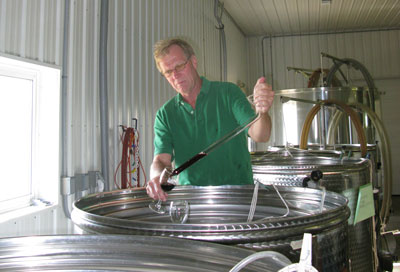
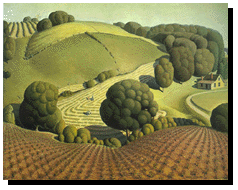

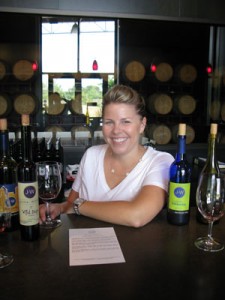
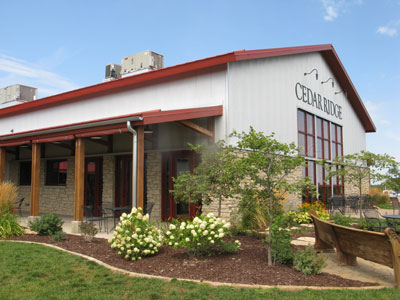







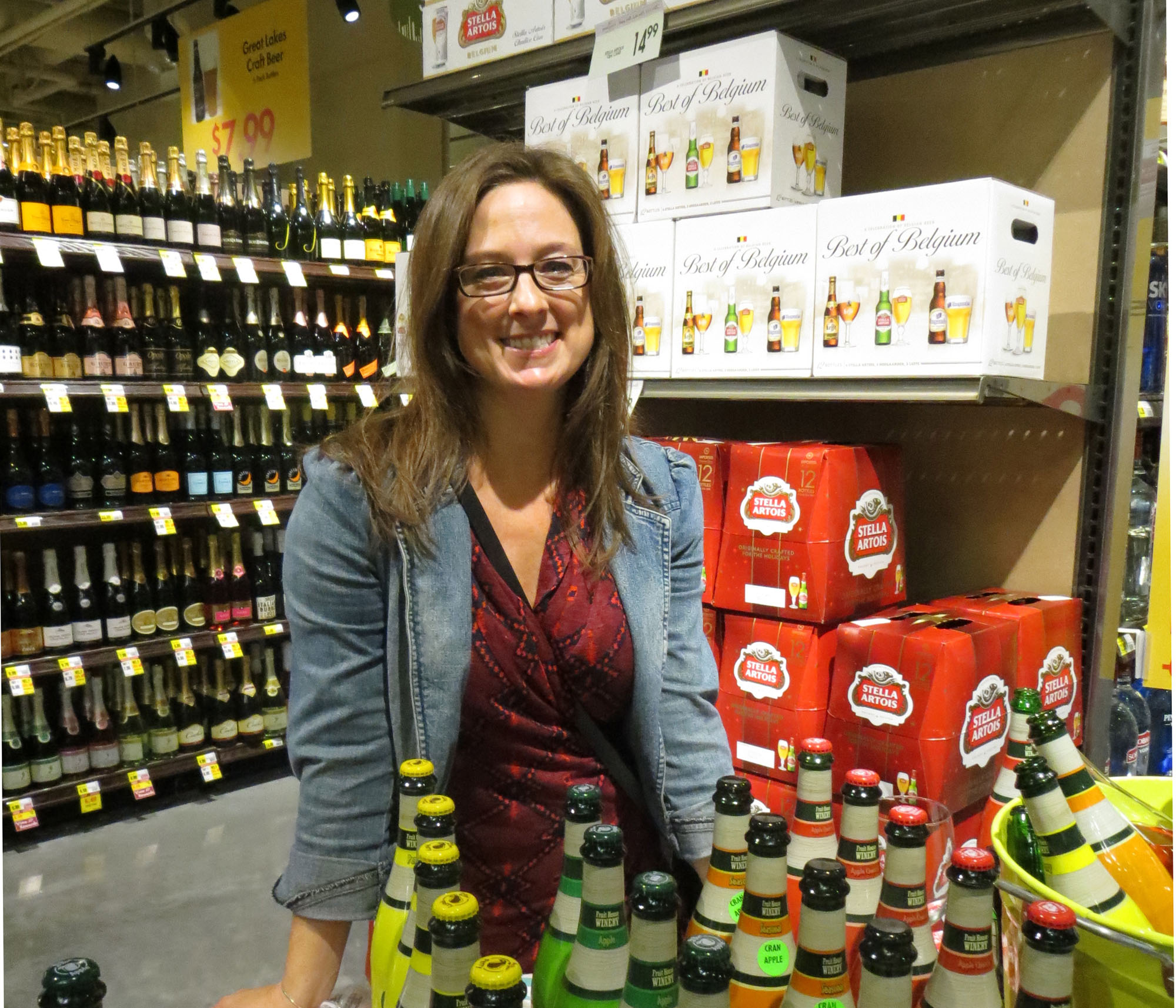
Does any winery in Iowa produce a fall Federweisser, or a similar young wine? Thanks!